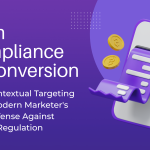Buying a domain sounds easy for many people who want to launch their web project – you pay a small fee and your site is up and running. However, some registrars only lure you with a low starting price without telling you directly about the costs that lie ahead.
Practice shows that cheap domains beckon with their affordability, but their real cost often goes beyond the initial discount. We have written this article to reveal the risks and costs you face when choosing budget options, as well as to give advice on how to secure your online project.
Why Are Cheap Domains So Popular Today?
Any aspiring businessman dreaming of launching an online project cannot pass up a domain for the price of a cup of coffee at Starbucks. Many registrars frequently offer very tempting options at the price of 1-2 dollars for the first year of use, and it really works.
Attracting startups, bloggers and small businesses, such offers will suit everyone who has every cent on the account due to the low starting budget. However, behind this generosity, there are some very unpleasant terms and conditions that pop up later, especially when you’re not ready for them.
Remember once and for all – the low price of a domain for the first year is nothing but a marketing ploy. Realising that moving a domain is quite a hassle, some registrars focus on long-term profits.
The fact is that many buyers rarely read the fine print. And this is where unpleasant surprises, such as a sharp rise in renewal fees or expensive services imposed.
Where is the Trick in Hidden Payments?
What costs low, rarely stays cheap for a long period. When it comes to an inexpensive domain, here are a few common pitfalls you should be aware of:
· A hefty price increase when you renew your domain. Imagine you only spent $1 to buy a domain. However, a year later, the registrar offers to renew it for $15-20. Such a significant increase in the cost of the domain will be an unpleasant surprise for everyone, especially for people with a limited budget.
· Imposing services. Here everything is simple – you buy a package that includes many additional services (not always necessary for you) with a significant discount for the first year. However, after 12 months, the registrar will ask you to pay for SSL certificates, advanced hosting, WHOIS protection and other things, which can lead to an increase in cost up to $50-100.
· Additional migration costs if you decide to move to another registrar. Typically, the cost of such a transfer is an average of $10 per domain.
· High cost of recovery when you hit a redemption period. Some registrars will charge you $80-100 if you did not renew the domain in time and missed the grace period, too.
To avoid such surprises, you need to carefully study all the terms and conditions. In addition, you should check if the domain is free, what its history of use and other important things with the Namachep domain checker, a popular domain checking service.
Security Risks of Your Web Project
While some registrars pack in a host of unnecessary services, others cut back on very important functionality, thereby opening the door to security concerns. According to CSC, over 70% of companies use less than half of the necessary security measures.
In addition, by neglecting encryption and WHOIS privacy, some registrars leave your contact details open to attackers. One budget domain provider allowed 500 domains to be stolen in 2021, leading to serious consequences and lengthy litigation.
Reputational Risks
Since the domain is the face of your online brand, over-saving can be an irreparable blow to credibility. Many internet users still associate new TLDs like .info or .xyz with spam, and for good reason.
While Namechip reports that .shop has grown dramatically in popularity in recent years, .com is still the undisputed leader. If your TLD looks questionable, potential customers will leave for a competitor with a more trusted top-level domain.
In addition, some registrars have poor expiration notifications, which leads to the domain going to auction. If you fail to renew the domain in time, it can be bought out by your competitors or fraudsters, thereby causing irreparable damage to your reputation.
Impact of Cheap Domain on SEO
Although domains do not directly affect search engine rankings, a cheap domain can pull SEO down for your web project. For example, by choosing an option with a slow DNS server, you will suffer from increased site load times, making your project look bad to Google.
Since budget registrars rarely invest enough in infrastructure development, user experience suffers. If your site load time exceeds 3-4 seconds, most of your visitors go to your competitors.
Also, don’t forget to check the history, aes buying a domain with a toxic past is money down the drain. Thoroughly check the domain’s history to buy an option you will definitely not regret.
Cheap Doesn’t Mean Beneficial
Having fallen for another advert from a low-cost domain name registrar, you will not be happy a year later, as the price can jump significantly. Having studied the terms in detail, you will find that the real price includes a high renewal fee, hidden charges, security risks, potential blows to SEO, and, more importantly, to reputation.
If you want to save your project from unpleasant surprises, choosing a reliable registrar with transparent rates and all necessary security measures is better. Since the domain is the most valuable asset of your online business, approach its choice as responsibly as possible without being tempted by too low a price.
Lynn Martelli is an editor at Readability. She received her MFA in Creative Writing from Antioch University and has worked as an editor for over 10 years. Lynn has edited a wide variety of books, including fiction, non-fiction, memoirs, and more. In her free time, Lynn enjoys reading, writing, and spending time with her family and friends.















